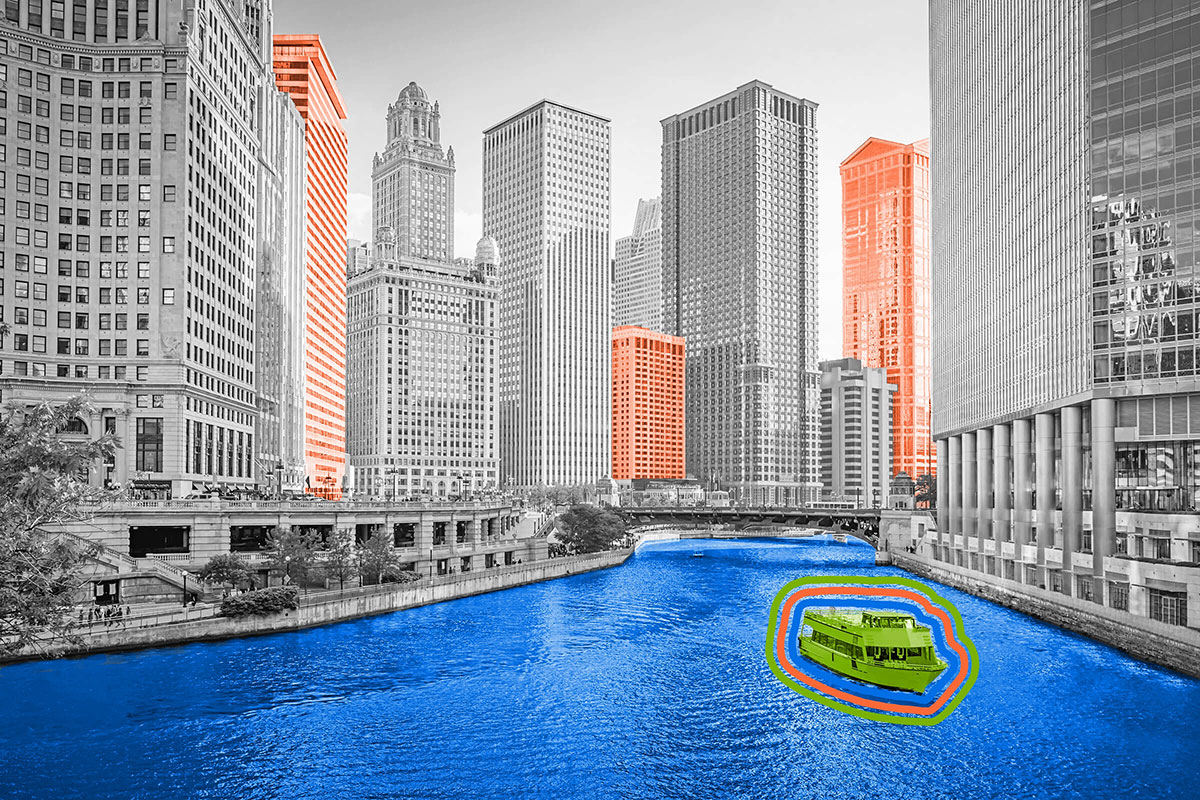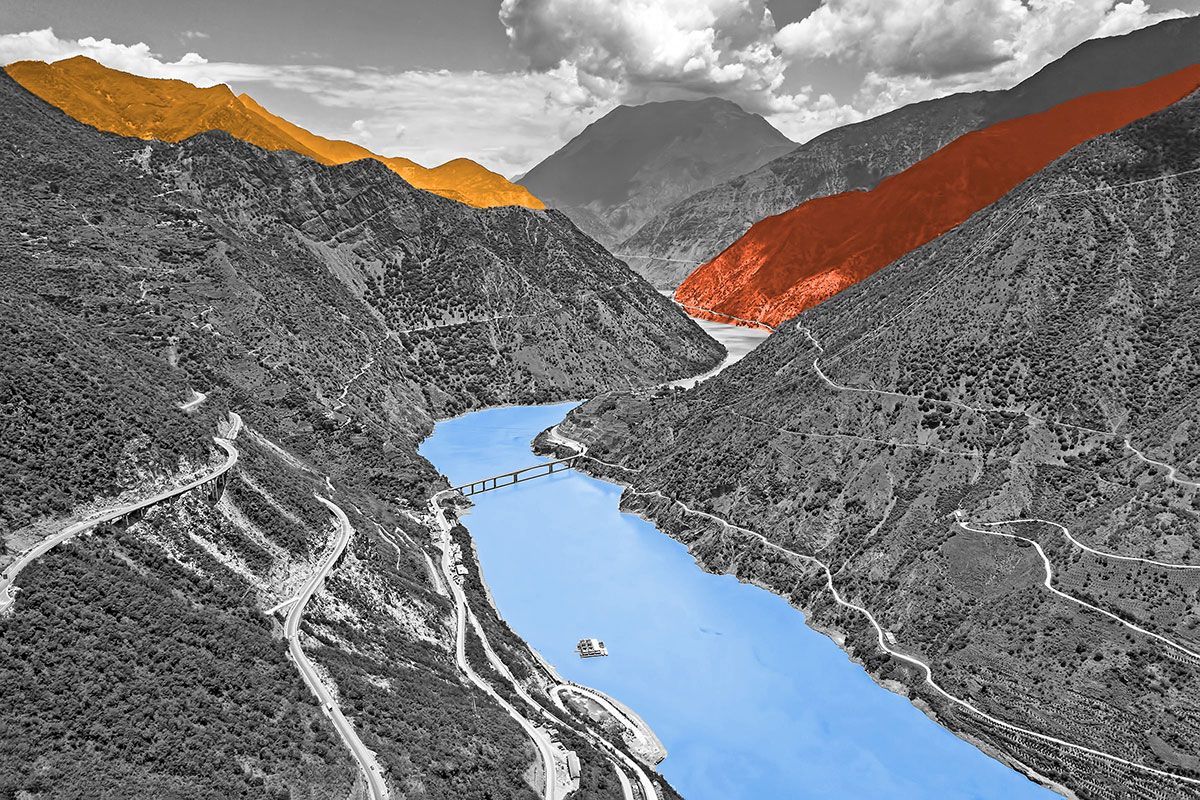
The Chicago River flows backward.
In the second half of the 19th century, Chicago was one of the fastest-growing cities in the world. In 1870, it was home to 299,000 people, and by the century’s end, 1.7 million. But along with that population boom came unfortunate side effects, including waterborne diseases such as cholera and typhoid. The problem was in large part that the city’s sewage flowed into the Chicago River, which in turn emptied into Lake Michigan — the source of the city’s drinking water. So Chicago turned to engineer Ellis S. Chesbrough, designer of the city’s sewer system, to solve the problem once and for all.
Initially, Chesbrough designed a 2-mile-long tunnel 60 feet below the bottom of Lake Michigan to draw less-polluted water from farther offshore. Unfortunately, all it took was a heavy rain for this far-flung water source to also become polluted, so Chesbrough eyed another solution. If the city’s eponymous river could just flow away from Lake Michigan and empty into the waterways leading to the Mississippi, Chicago’s water problem would be solved. The subcontinental divide just west of Chicago is what caused the river to flow toward the lake, so if the city dug a ditch lower than both the lake and the river through the divide, gravity would take it from there.
Workers began the laborious process of reversing the Chicago River in 1892. After eight years of digging (and under cover of night due to mounting lawsuits from cities downstream), Chicago blew up the last dam on January 2, 1900. Chesbrough never saw the incredible feat of human engineering — he died in 1886 — but his ambitious plan saved the city, securing its prosperous future into the 20th century and beyond.
Although things like “thunder” have been suggested as the origin of the name “Chicago,” the roots of the word are much different. According to Illinois historians, “Chicago” derives from the French transliteration of the Miami-Illinois word “šikaakwa,” used to describe a foul-smelling striped skunk as well as the similarly smelly garlic or leek (Allium tricoccum) found throughout the region. In 1687, when French fur trader and explorer Robert de La Salle passed through the area, he wrote in his journal, “we arrived at the said place called ‘Chicagou’ which, according to what we were able to learn of it, has taken this name because of the quantity of garlic which grows in the forests in this region.”

